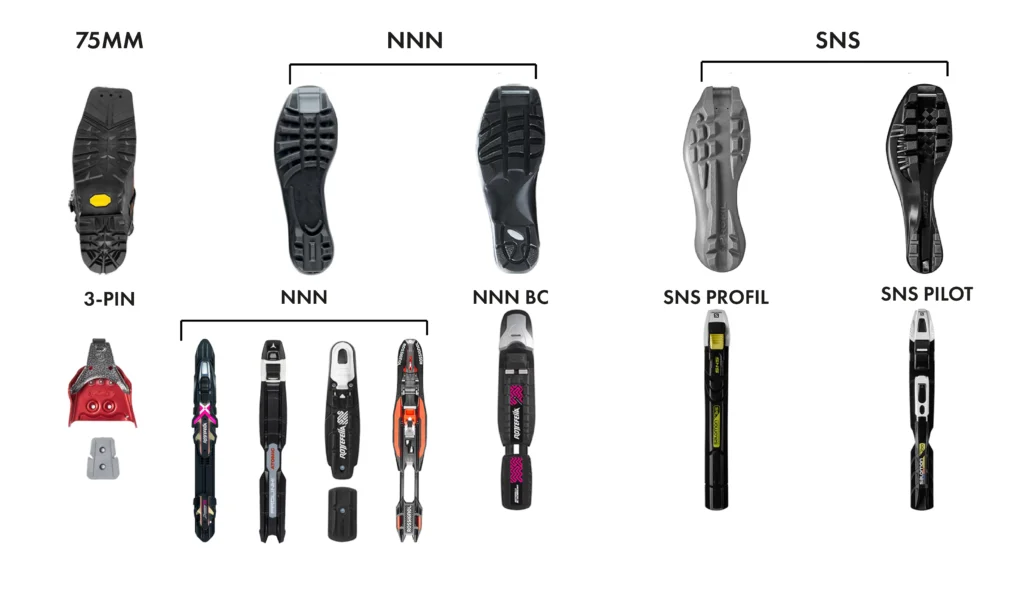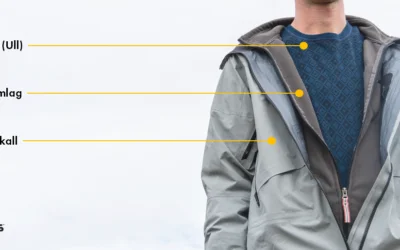Boots for the backcountry
For oss ski-og vinterentusiaster er det noe spesielt med den rå opplevelsen av urørt natur i kombinasjon med å sette egne spor, ta egne valg og kjøre svinger i urørt snø. Vi lever for kontakten og nærheten til naturen og fjellet. Som alle «skibomser» med respekt for seg selv, så er jo vi også opptatt av utstyret. Det å optimalisere utstyr til personlige preferanser er nok noe mange folk kan kjenne seg igjen i. As it happens, our species has a long history of gear-dorkery. Palaeolithic and neolithic engravings of skiers in Norway even indicate bindings, poles, and recognisable XC stances – albeit we don’t know if stone age Norway went for NNN BC or 75mm. Anyway. In short, the wrong boots lead to painful feet, and painful feet lead back to the car with a miserable shuffle. It’s our sacred duty to prevent this – hence the following guide to things to bear in mind when buying new ski boots for tours off-trail.The most important thing to remember when choosing boots:
Shoes that have passed the quality test
Boots that suit your foot, your use and your preferences are more important than the brand. Of course, some will choose boots with a Norwegian connection. Which is understandable. As far as we’re concerned, get boots from people who have proven over many years that they’re good at boots for binding to cross-country skis in the backcountry. So that’s why we tend to recommend shoes from either ALFA, Alpina, Crispi or Lundhags.Bindings
Here’s what you need to know. It’s worth getting into the details: boots and bindings are, in some ways, a decision you make as a package.
1. Fit – the foot decides
Always check in with your feet before you buy boots. See if they fit them. No matter what you read or hear, this is where your feet interface with the ski, and it has to be right. All feet are different, and all boots are made to different “lasts”. Set aside time to go into a good specialist shop, chat with people there. The aim is a boot that suits your foot, your needs, and your terrain.2. The right boot for the right use
On long, gentle trails in the forest or mountain, simple comfort is the priority. If your touring includes steeper descents or icy conditions, a boot with more stability is essential. The stiffness of the sole and the support in the shaft determines the degree of control you’ll have on the hill. 75mm bindings also provide more torsionally stable soles, which give better steering properties. If you’re out in the mountains at Easter with the crowds, easy skiing conditions are hard to find. On fast and rutted tracks, stable boots provide good support for the feet and legs. In deep and loose snow, gaiters may be a necessity. For those who do most of their skiing in loose snow, integrated gaiters are very practical. An integrated gaiter keeps the snow safely out of the boot. As it’s integrated into the boot, snow doesn’t ride up inside the gaiter and get in that way, as it can with loose gaiters. And the high gaiter provides good insulation for feet and calves, too.3. Choose boots for your bindings
Obvious one – but make sure the boots you buy fit the bindings on the skis. The most-used binding is Rottefella’s NNN BC binding. If it’s not BC, it’ll be traditional 75 mm bindings.4. Keep your feet warm in the hills.
An indisputable requirement for a successful tour in the mountains is that you keep your feet warm. Boots for the backcountry shoud be well insulated. Boots should be suited for normal Norwegian winter days – down to -20°. A high, integrated gaiter provides an additional heat-insulating air pocket on the calves and will be good on the coldest days. For days of extreme cold, expedition boots will keep your feet warm. These are boots with an extra layer pf insulation, and preferably also a felt liner, or equivalent, that keeps you warm. Felt or foam innersoles add a good insulating layer too!5. Test your boots before you set off on a longer tour!
Before you put your new boots into use in the backcountry, make sure they both fit. Ideally, you should be able to move your toes a little while your foot fits snugly at the heel. And obviously, your boots should be comfy. A few short mini-tours before you set off on a longer expedition to break in your boots is a good idea. This can avoid chafing when you’re miles from home and running out of blister plasters. Impregnation is a good idea, too – it doesn’t only protect the leather, if you use the right one in the right places, it can make your boots a little softer where they need to be. Don’t automatically put softening mink oil on the shaft, though. It can mean less support.Binding compatibility
What’s under your boot and on top of your ski? This is completely crucial.
Which boots do you have?
There are five main types of Nordic boot soles, all with corresponding bindings:
Boot compatibility quick-check:
| NNN Boot | NNN bindings, NIS bindings, Turnamic bindings, ProLink bindings |
| NNN BC Boot | NNN BC bindings |

75 mm (3-pin) boots
75mm, or “3-pin” boots are the most obviously distinctive family of Nordic ski boots. They have a 75mm wide “duck bill” on the front of the shoe, with three holes on the bottom of the sole, which line up with the pegs on the correct binding.NNN boots
NNNN boots, or New Nordic Norm boots, come in both BC (backcountry) and classic “langrenn” varieties. NNN boots, made for prepared trails and narrower, lighter, skis have a single bar at the toe and two channels that match corresponding ridges on the binding. NNN BC boots have the same configuration, but with a more sturdy 37mm bar and wider, deeper channels. NNN boots and NNN BC boots are not compatible with the same bindings!SNS boots
Salomon Nordic System boots come in two different options: Profile and Pilot (the backcountry variant of the SNS, the X-ADV, was retired in 2015). All SNS boots have a bar at the toe and channels along the sole. SNS Profil boots have a single bar; SNS Pilot boots have two — one at the toe, one underfoot. SNS Profil and SNS Pilot boots are not compatible with the same bindings nor compatible with NNN bindings.Skis can also come with plates
Some skis come with plates. It only takes a moment to make sure your bindings, boots and plates are compatible. There are many different types of plates:
Care for the outdoors dog
All good research on dog training agrees: planning is key for keeping a dog happy and thriving. This applies when adapting to new environments and weather conditions. Ideally, your dog would probably be inside the cabin or at home in front of the fireplace as much as possible when it’s cold outside. But if we make the decision to take the dog out into the cold, it’s our responsibility to make certain that the animal’s well protected.

Equipment tips for Expedition Amundsen
If you’ve signed up for the “world’s hardest expedition race” then you know it’s seriously demanding. Meticulous preparation is absolutely required if you’re going to make it to the finish line at all. This includes making the right choices about equipment. So here’s our guide to help.

Packing for alpine touring
Some extra clothes, a headlamp and a spare battery for the avalanche beacon. These go in the pack without thinking. But what else do you need? We asked mountain guides and our panel of experts what we should bring. Here’s what they said – with some useful advice and tips.
Hot waxing skins
Hot waxing skins? Yes. That’s right. The rumours are true: you can wax skins. With glide wax. And an iron. And for alpine touring, it works a total treat.

Dressing for adventure: what to wear in the wild
Norwegian grandmothers have it right: always wear wool against the skin. Beginning with wool as the first layer, the three-layer principle applies. Step this way for a guide to wrapping up warm in the wild.

Waxing and prepping alpine touring skis
We don’t put in all that effort just for the view. We do it for the way down. So let’s talk about glide wax. It provides better glide, protects the sole from wear. The specific wax, even how carefully you do the work, isn’t really so important – it’s not a race. And it doesn’t have to be complicated at all…